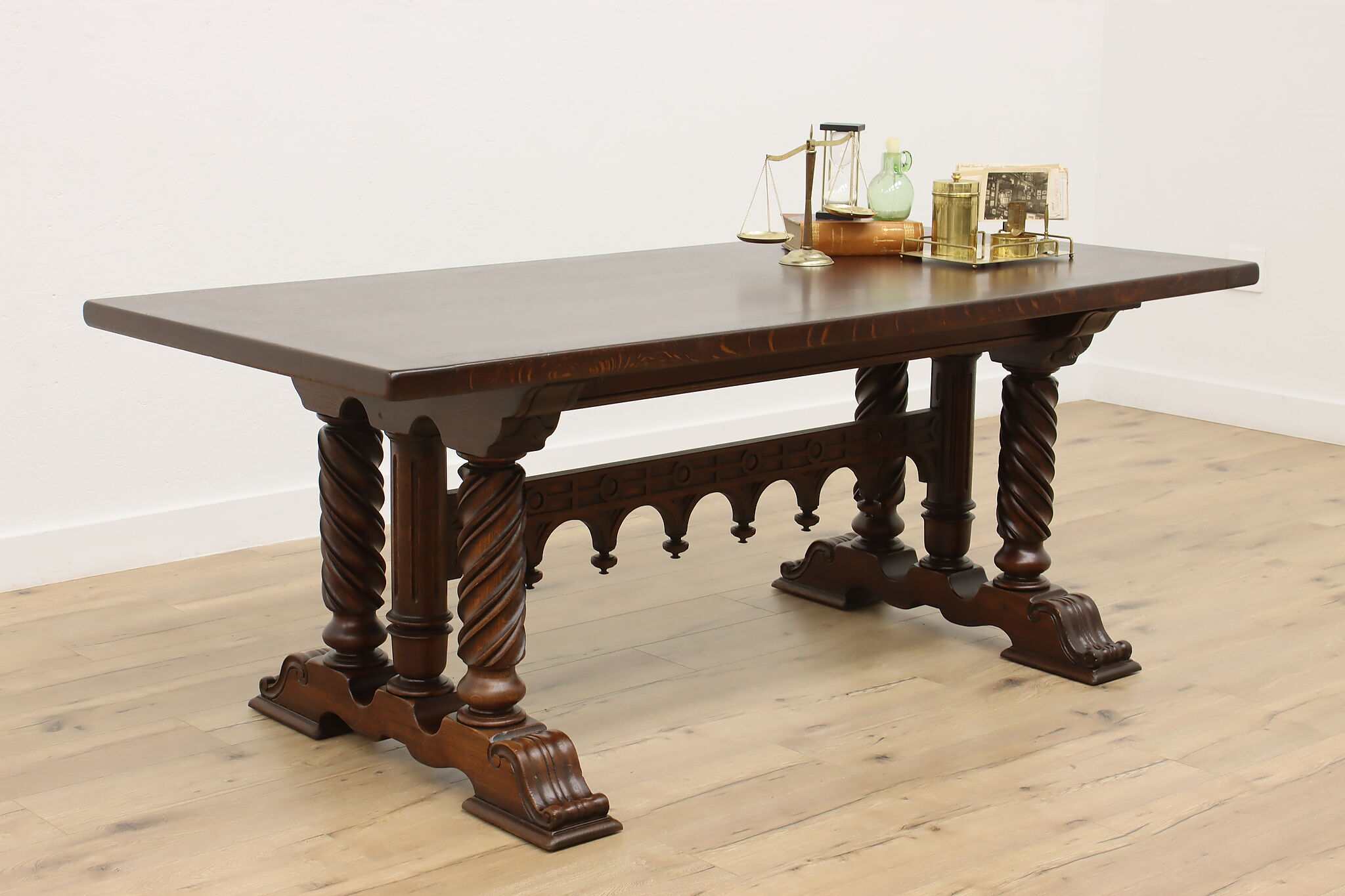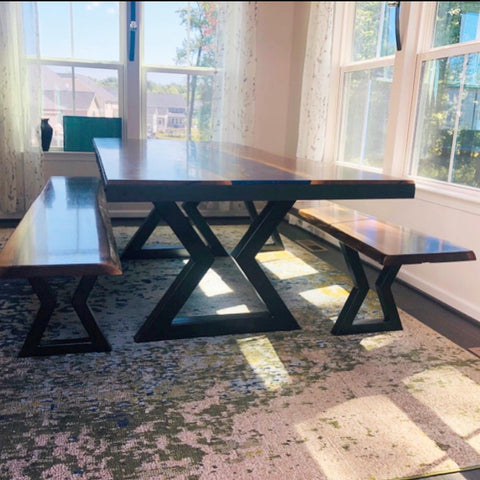Why Dining Room Table Legs Are Crucial for Your Table’s Stability
Why Dining Room Table Legs Are Crucial for Your Table’s Stability
Blog Article
From Traditional to Modern: Locate the Ideal Dining-room Table Legs for Your Design
While traditional designs such as cabriole and transformed legs evoke a sense of classic refinement, contemporary styles like hairpin and geometric alternatives present a chance for striking aesthetic rate of interest. As you think about these components, the inquiry remains: exactly how can you effortlessly incorporate these diverse leg styles to produce a harmonious eating experience?
Comprehending Table Leg Styles
The variety of dining-room table leg designs can substantially affect both the visual appeals and performance of the room. Each leg design contributes unique visual components and useful features, satisfying varied style choices and usage demands. Understanding these styles is vital for picking the ideal eating table that straightens with your general indoor layout vision.
For circumstances, conical legs use a clean, timeless look that can improve a space's beauty, while pedestal bases provide security and take full advantage of legroom, making them optimal for smaller spaces. Barrette legs, a trademark of mid-century modern layout, present an industrial flair, permitting for a ventilated, open feel. In a similar way, trestle legs stimulate rustic charm, giving durable support and a feeling of timelessness.
Wooden legs can bring warmth and appearance, whereas metal alternatives typically share a smooth, modern ambiance. Ultimately, recognizing table leg designs is important for creating a natural eating area that mirrors personal style while making sure practicality and comfort.
Typical Table Leg Options
When selecting dining space table legs, typical options usually symbolize ageless style and workmanship. These designs reflect a rich heritage and a commitment to high quality, making them excellent for those who appreciate traditional appearances.
Among the most iconic conventional leg styles is the cabriole leg, characterized by its graceful curved shape. This design typically features ornamental makings and is most generally located in Queen Anne and Chippendale furnishings. An additional preferred alternative is the transformed leg, which flaunts a collection of smooth, rounded forms that supply a timeless appearance while preserving stability.
Additionally, the straight leg, while basic, uses a strong and unadorned structure that can blend seamlessly with a variety of tabletop designs. For those attracted to ornate outlining, claw-and-ball feet legs evoke a sense of grandeur and can function as a stunning centerpiece in any kind of eating area.
Lastly, stand bases, although not purely legs, supply an alternate traditional alternative that permits for adequate legroom and can be perfectly carved. Each of these conventional leg styles contributes to the general setting of a dining-room, weding function with aesthetic allure.

Modern Table Leg Layouts
Modern table leg styles offer a varied variety of designs that stress tidy lines and cutting-edge materials. These designs often focus on functionality while functioning as striking focal points within a dining room. Minimalist aesthetics prevail, with legs crafted from materials such as steel, glass, and engineered wood, which add to a airy and modern feeling.
One popular style is the barrette leg, characterized by its slender, conical structure that supplies security without overwhelming the tabletop (dining room table legs). This design is often discovered in mid-century modern-day furnishings and can easily enhance numerous table forms. An additional fad is using geometric forms, where legs might take on angular or unbalanced types, including aesthetic interest and a touch of creativity

Mixing Designs for One-of-a-kind Rooms
Usually, home owners look for to produce distinct dining spaces that reflect their personal design by mixing different style elements. This approach permits for the unification of varied appearances, leading to a harmonious yet distinctive setting. As an example, combining a rustic wooden table with sleek, modern-day steel legs can create a distinctive comparison that raises the area's general appeal.
Additionally, integrating vintage table legs with modern table tops can evoke a feeling of history while maintaining a modern perceptiveness. Such Discover More mixes not only next page showcase individual preference yet also motivate creativity, allowing home owners to curate an area that really feels both personal and inviting.
Shade plays a vital role in this mixing process; choosing table legs that enhance or contrast with the existing color design can improve visual rate of interest. As an example, whitewashed legs can soften the daring of a dark table surface area, producing a balanced aesthetic.
Tips for Picking the Right Legs
Selecting the right table legs is vital for attaining both performance and aesthetic charm in your eating area. Begin by considering the overall style of your room. Conventional settings take advantage of legs that include complex makings or transformed styles, while contemporary areas may call for sleek, minimal styles.
Following, evaluate the height and security of the legs. dining room table legs. Standard table range between 28 to 30 inches in height, so make sure the legs enhance this measurement for comfort. Furthermore, robust materials, such as hardwood or steel, can boost security and durability
Assess the leg form also-- alternatives consist of straight, tapered, or pedestal designs. Straight legs navigate to these guys use a classic appearance, while tapered legs can add a touch of elegance. Pedestal bases offer adequate legroom and are suitable for smaller sized areas.
Verdict
In recap, picking the suitable dining-room table legs needs careful consideration of both contemporary and conventional styles. Typical alternatives such as cabriole and transformed legs provide classic beauty, while contemporary designs like hairpin and geometric forms supply a modern touch. By balancing leg design, elevation, and product with the general decoration, a natural and welcoming atmosphere can be achieved. Ultimately, the chosen table legs should reflect the desired visual, improving the dining experience within the area.
The range of eating area table leg designs can substantially affect both the visual appeals and capability of the room. Ultimately, comprehending table leg styles is essential for developing a natural eating location that shows individual design while ensuring practicality and comfort.One of the most famous conventional leg designs is the cabriole leg, defined by its graceful rounded form. Straight legs use a timeless look, while tapered legs can include a touch of elegance.In recap, picking the perfect eating space table legs calls for careful factor to consider of both modern and standard designs.
Report this page